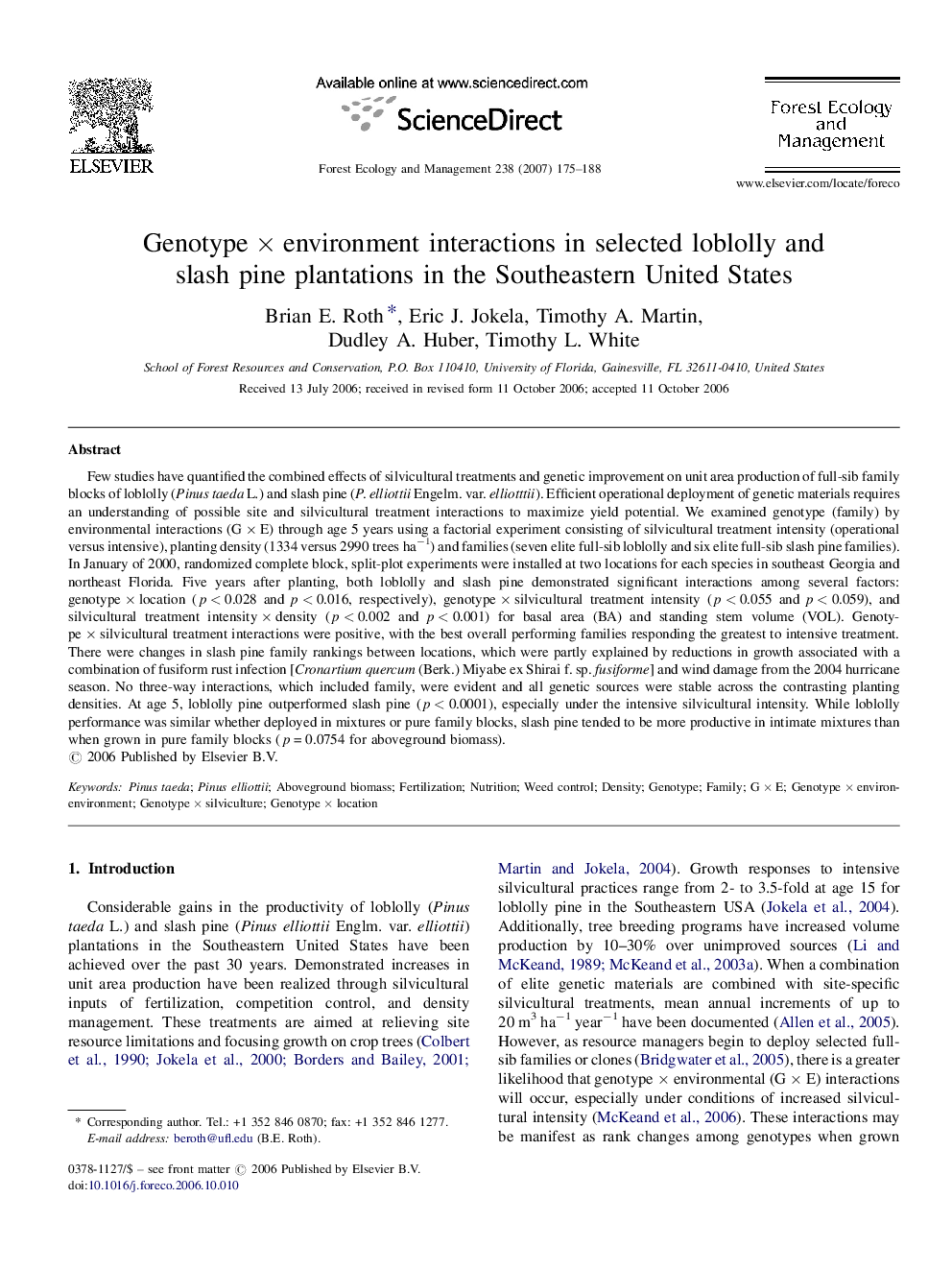| کد مقاله | کد نشریه | سال انتشار | مقاله انگلیسی | نسخه تمام متن |
|---|---|---|---|---|
| 90248 | 159374 | 2007 | 14 صفحه PDF | دانلود رایگان |

Few studies have quantified the combined effects of silvicultural treatments and genetic improvement on unit area production of full-sib family blocks of loblolly (Pinus taeda L.) and slash pine (P. elliottii Engelm. var. elliotttii). Efficient operational deployment of genetic materials requires an understanding of possible site and silvicultural treatment interactions to maximize yield potential. We examined genotype (family) by environmental interactions (G × E) through age 5 years using a factorial experiment consisting of silvicultural treatment intensity (operational versus intensive), planting density (1334 versus 2990 trees ha−1) and families (seven elite full-sib loblolly and six elite full-sib slash pine families). In January of 2000, randomized complete block, split-plot experiments were installed at two locations for each species in southeast Georgia and northeast Florida. Five years after planting, both loblolly and slash pine demonstrated significant interactions among several factors: genotype × location (p < 0.028 and p < 0.016, respectively), genotype × silvicultural treatment intensity (p < 0.055 and p < 0.059), and silvicultural treatment intensity × density (p < 0.002 and p < 0.001) for basal area (BA) and standing stem volume (VOL). Genotype × silvicultural treatment interactions were positive, with the best overall performing families responding the greatest to intensive treatment. There were changes in slash pine family rankings between locations, which were partly explained by reductions in growth associated with a combination of fusiform rust infection [Cronartium quercum (Berk.) Miyabe ex Shirai f. sp. fusiforme] and wind damage from the 2004 hurricane season. No three-way interactions, which included family, were evident and all genetic sources were stable across the contrasting planting densities. At age 5, loblolly pine outperformed slash pine (p < 0.0001), especially under the intensive silvicultural intensity. While loblolly performance was similar whether deployed in mixtures or pure family blocks, slash pine tended to be more productive in intimate mixtures than when grown in pure family blocks (p = 0.0754 for aboveground biomass).
Journal: Forest Ecology and Management - Volume 238, Issues 1–3, 30 January 2007, Pages 175–188